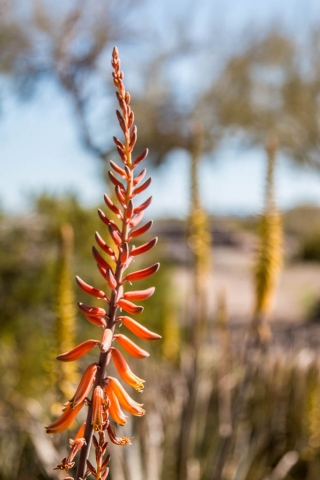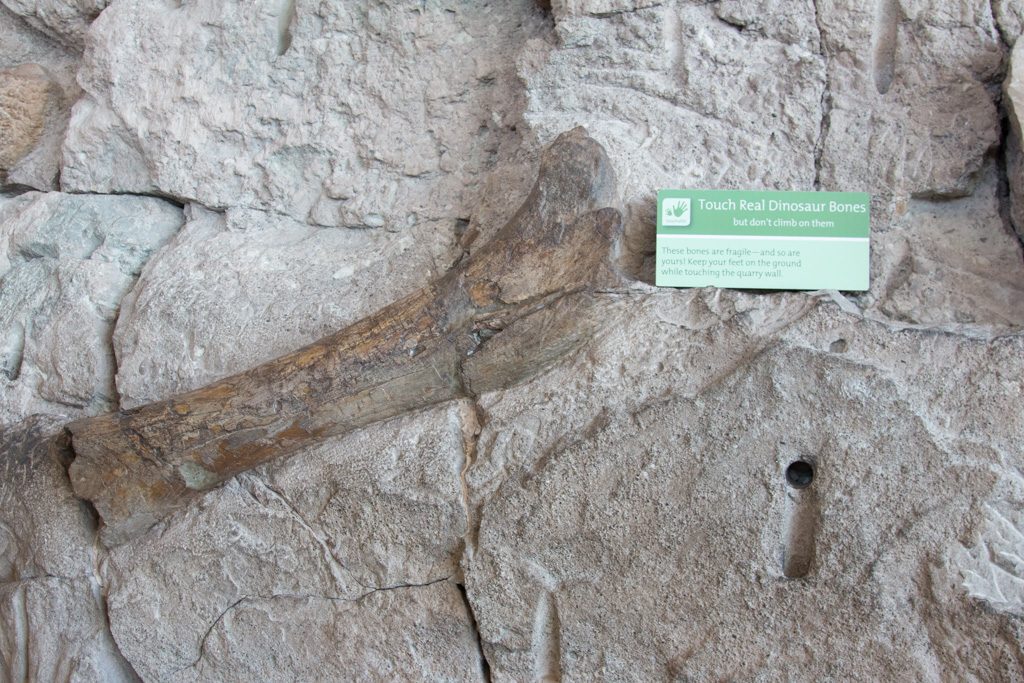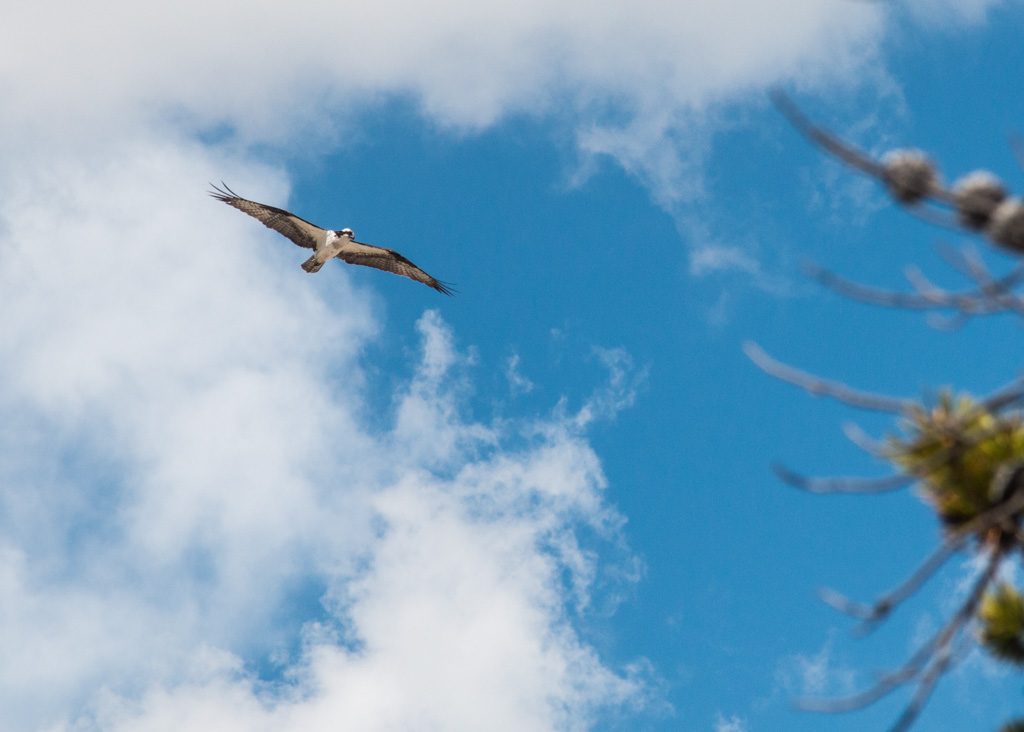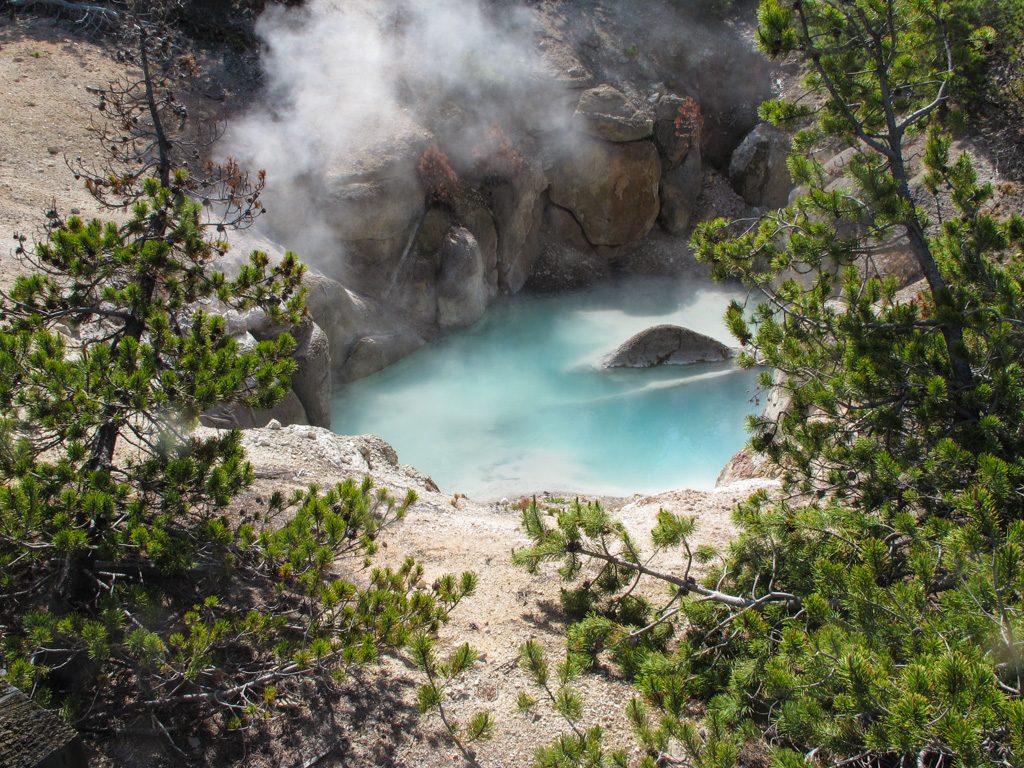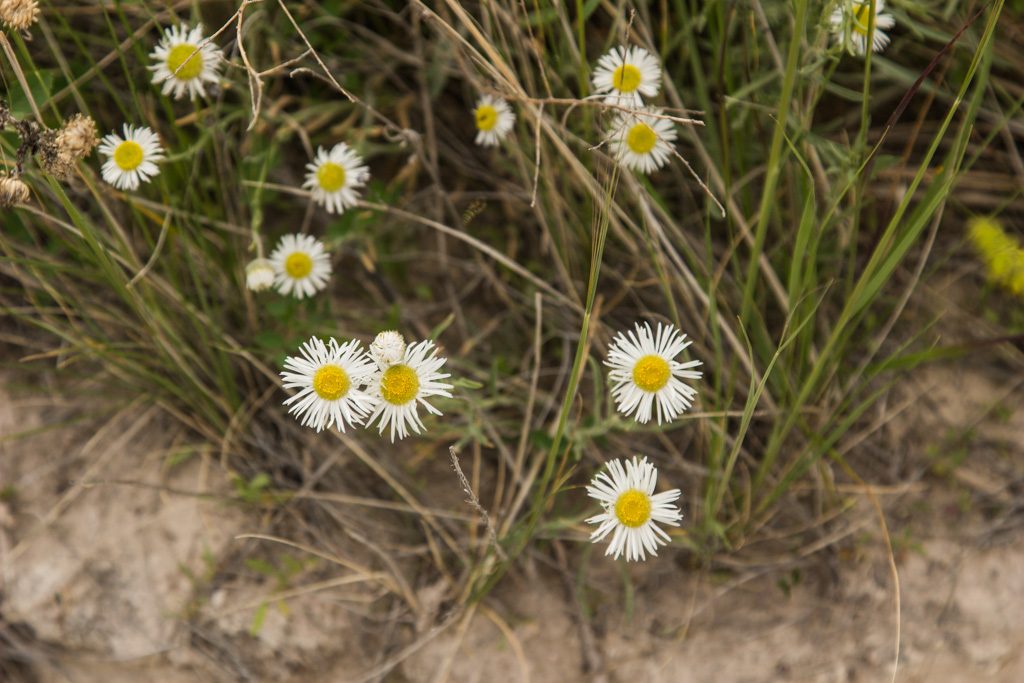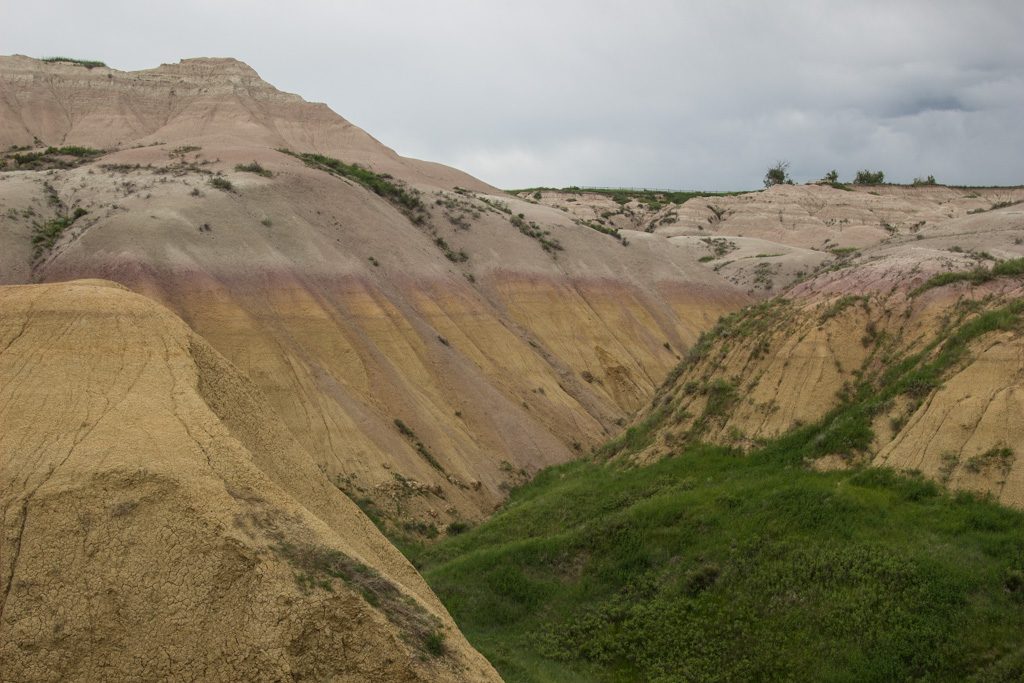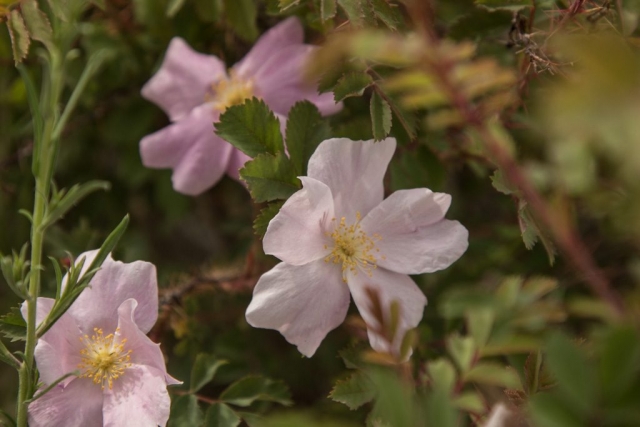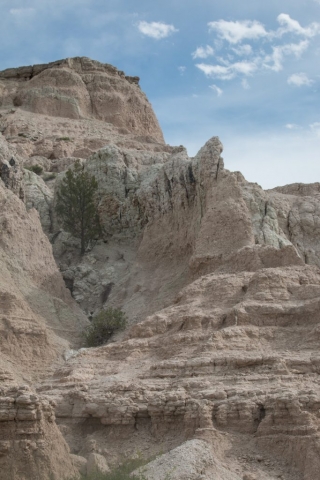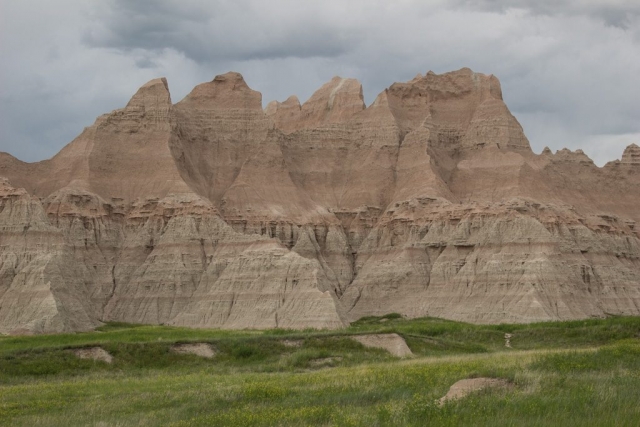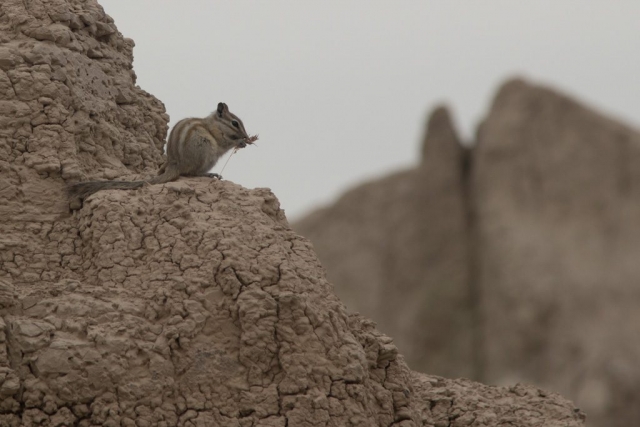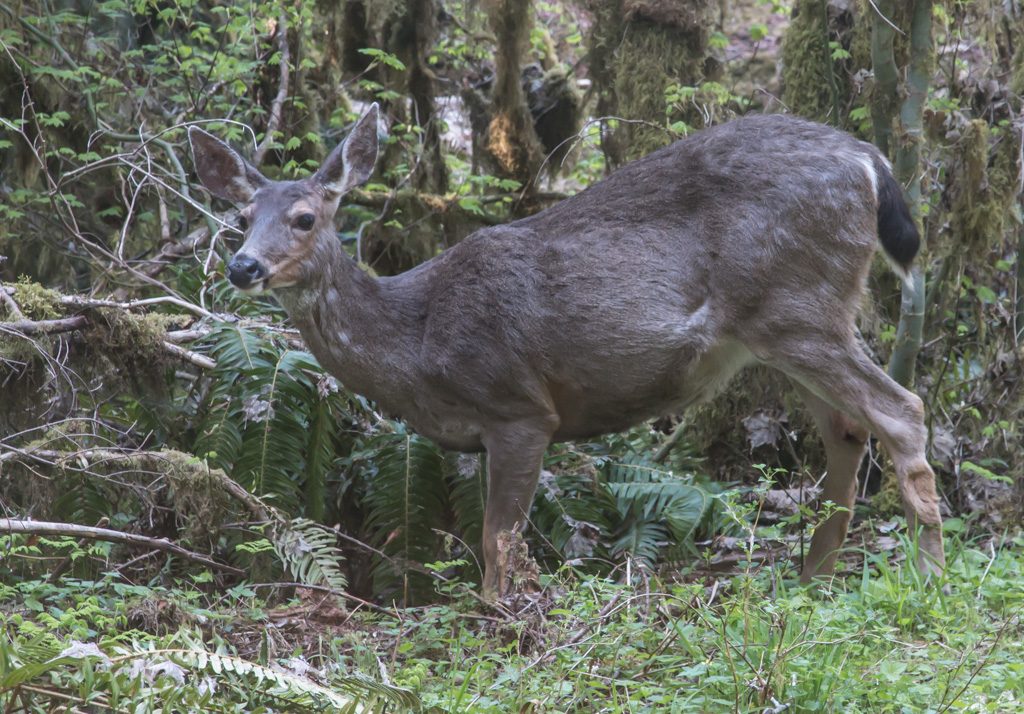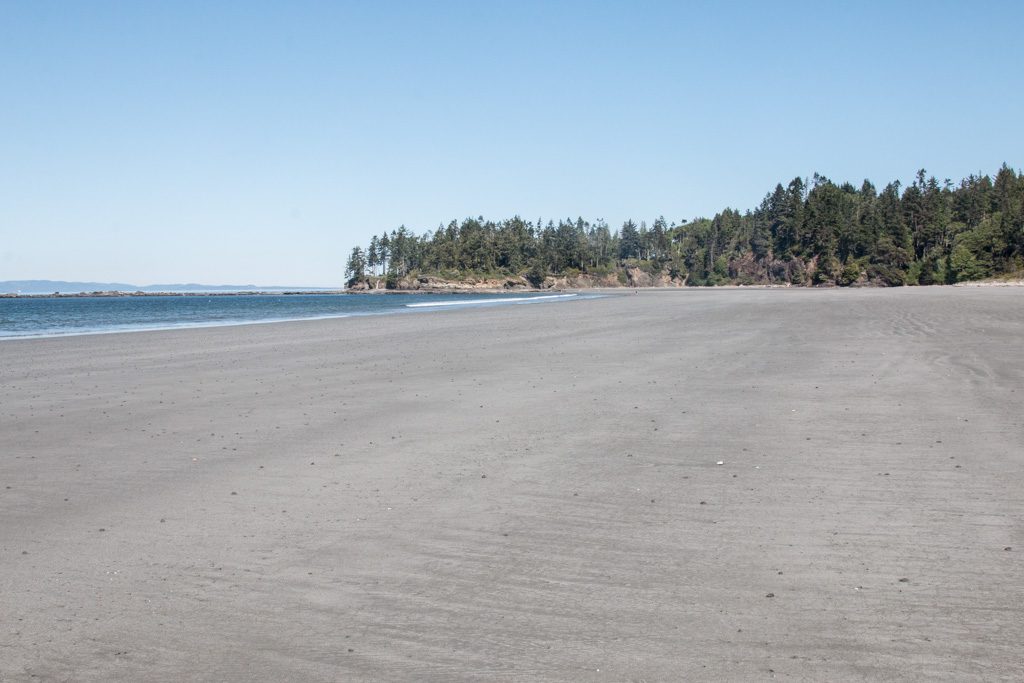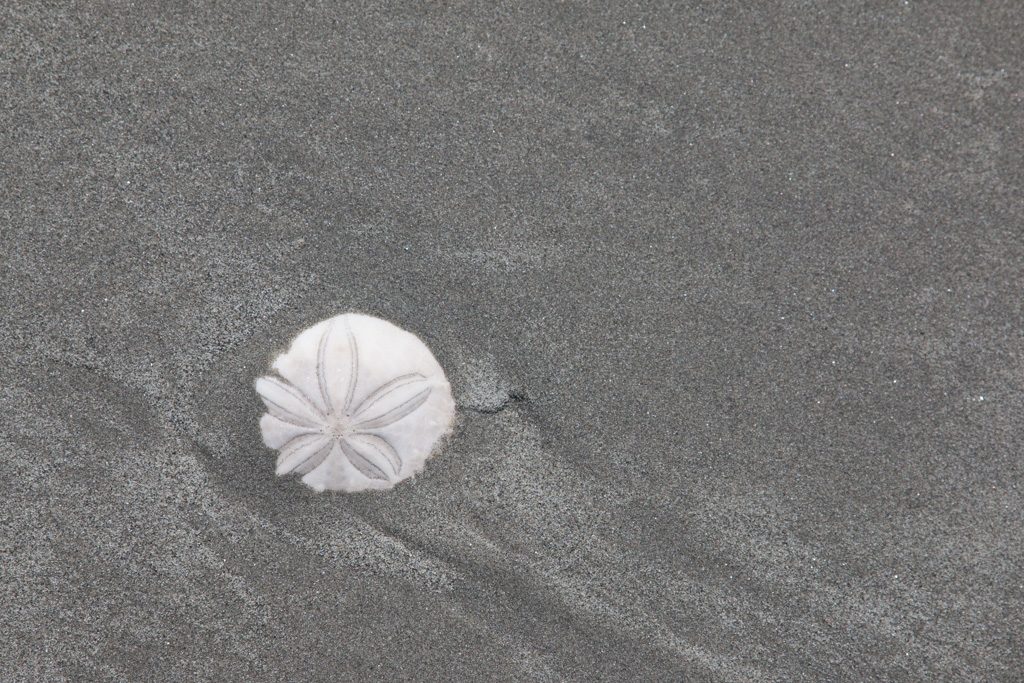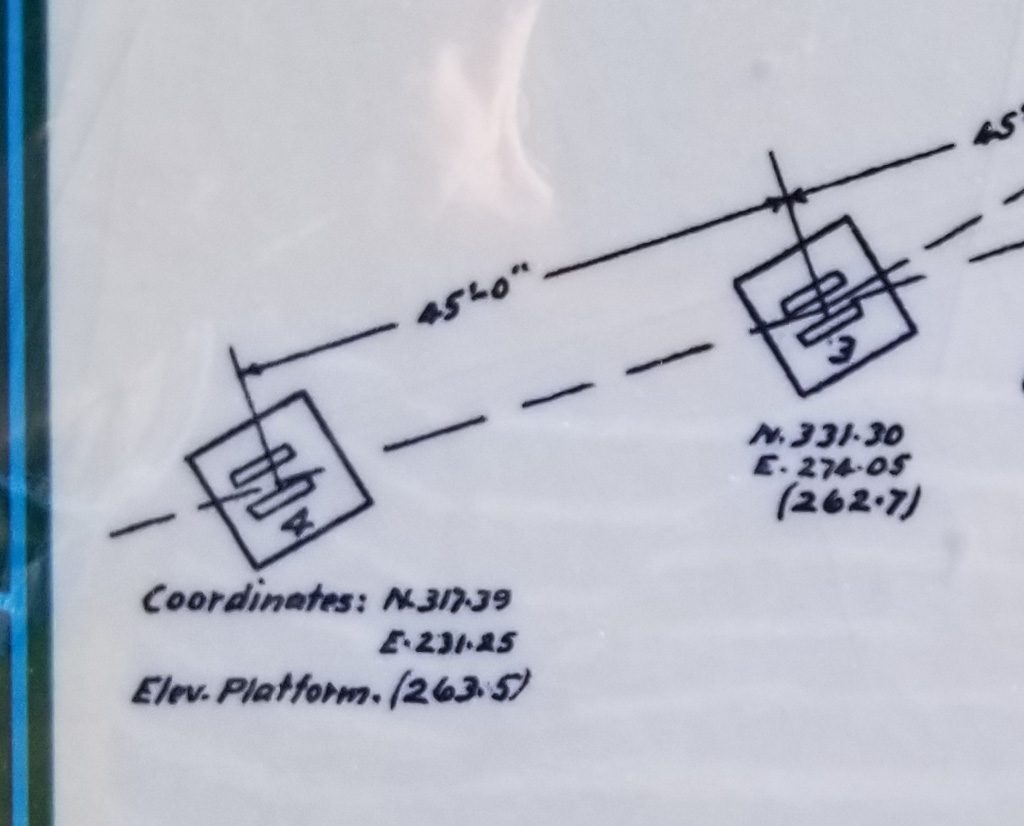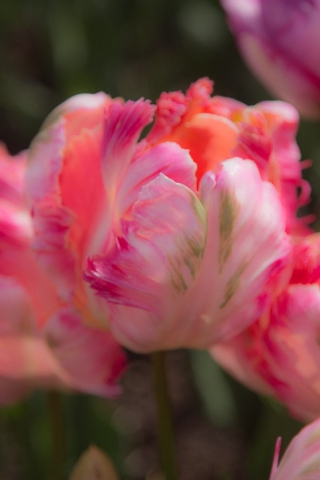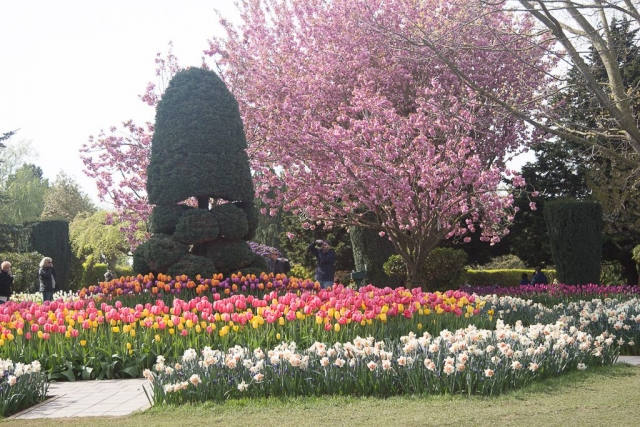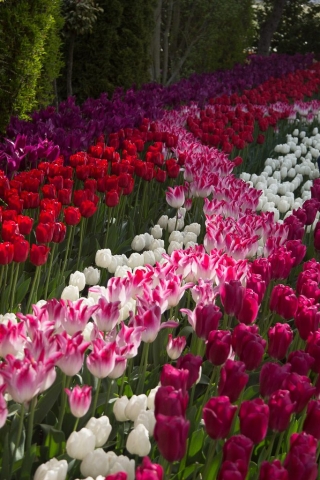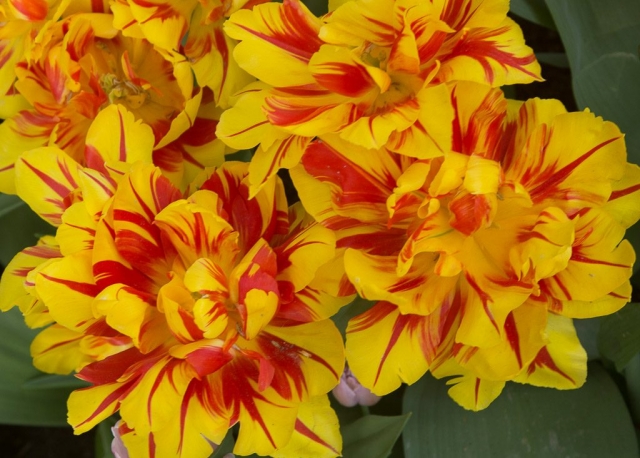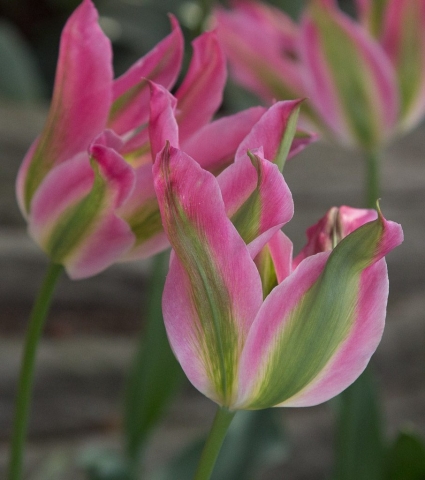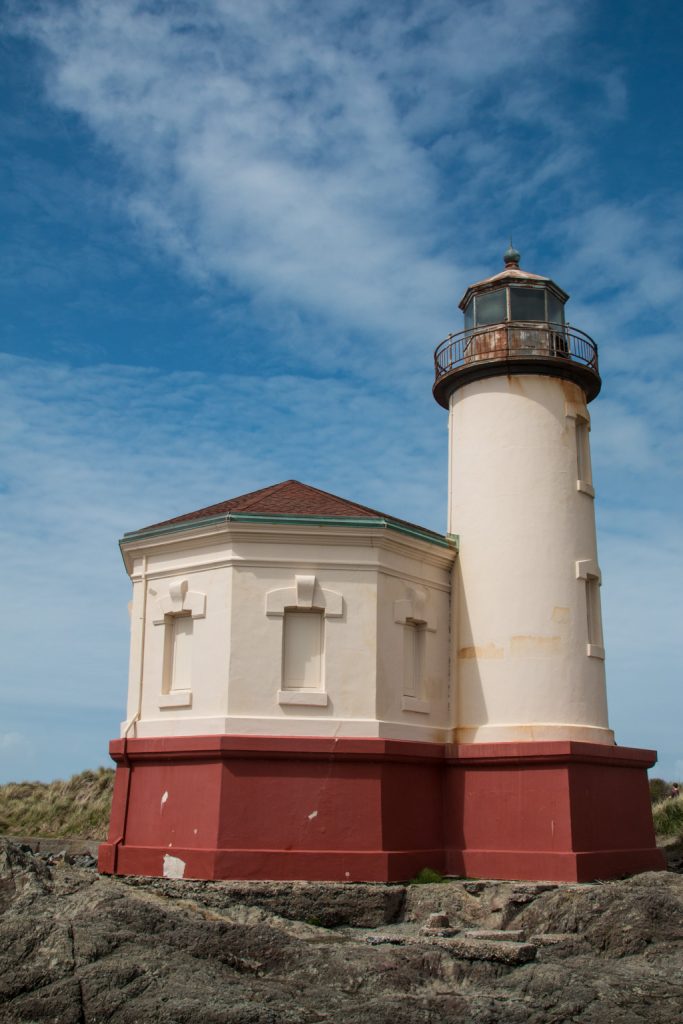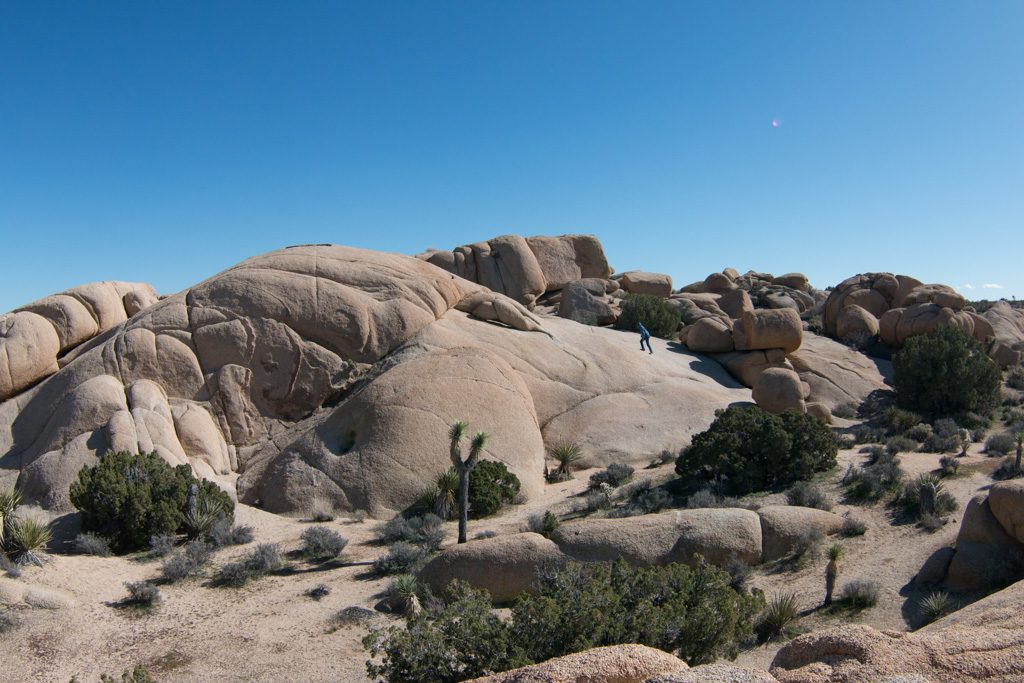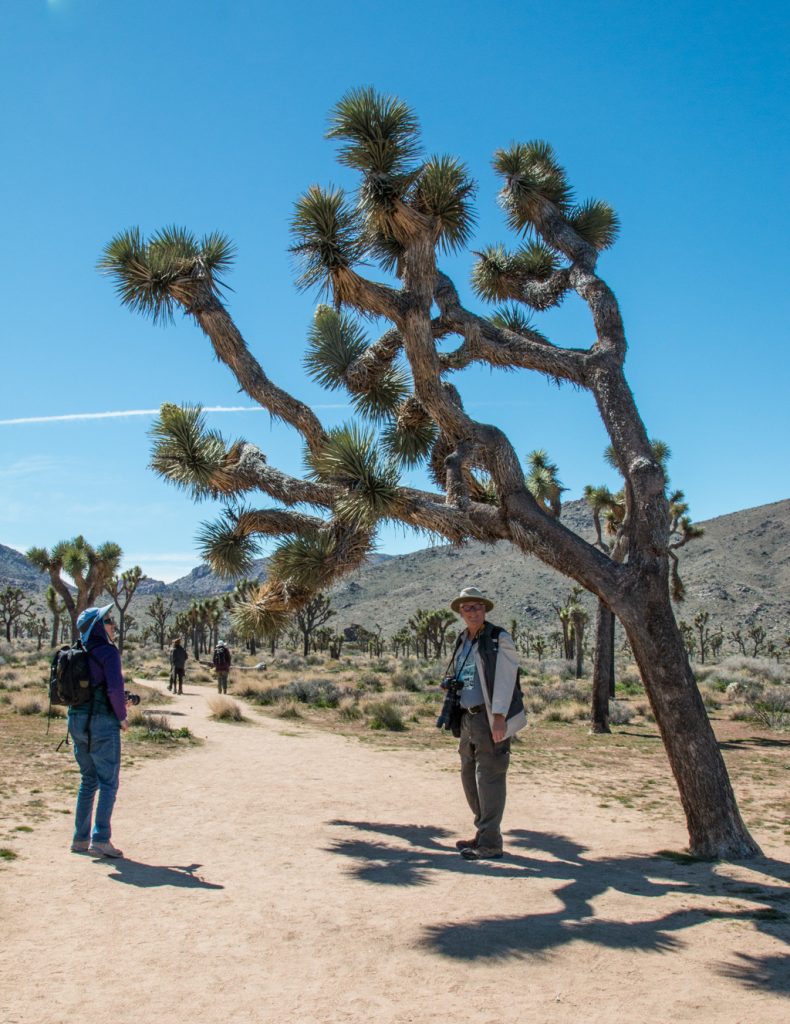Exploring KOFA
Near us is the KOFA National Wildlife Refuge. KOFA stands for King of Arizona, the name of one of the abandoned mines within the Refuge. We’ve written about KOFA NWR before, here and here. But now we can explore it more with Clark. And it is unbelievably pretty.
Recently we went to the KOFA Queen Canyon Road, which starts a little down the Palm Canyon Road. Palm Canyon road is accessible to normal vehicles. The Queen Canyon road most definitely is not, with narrow tracks, and steep descents and rises, sometimes without a level section in between. To traverse the Queen Canyon Road, you need something like our chariot, Clark.

Slightly to the north of Palm Canyon, Queen Canyon goes farther back, behind the mountains you can see from the road. These are much different than those in and near Quartzsite, just thirty miles to the north. Quartzsite’s are fairly gentle; the mountains in KOFA are more jagged. We’ll again apologize to our friends in the Rocky Mountain states. We know that these aren’t real mountains; one of the taller ones in the area, Cunningham Mountain, tops out around 3,280 feet ASL, or about 2,400 feet above town. But that’s the local terminology, so we’ll use it.
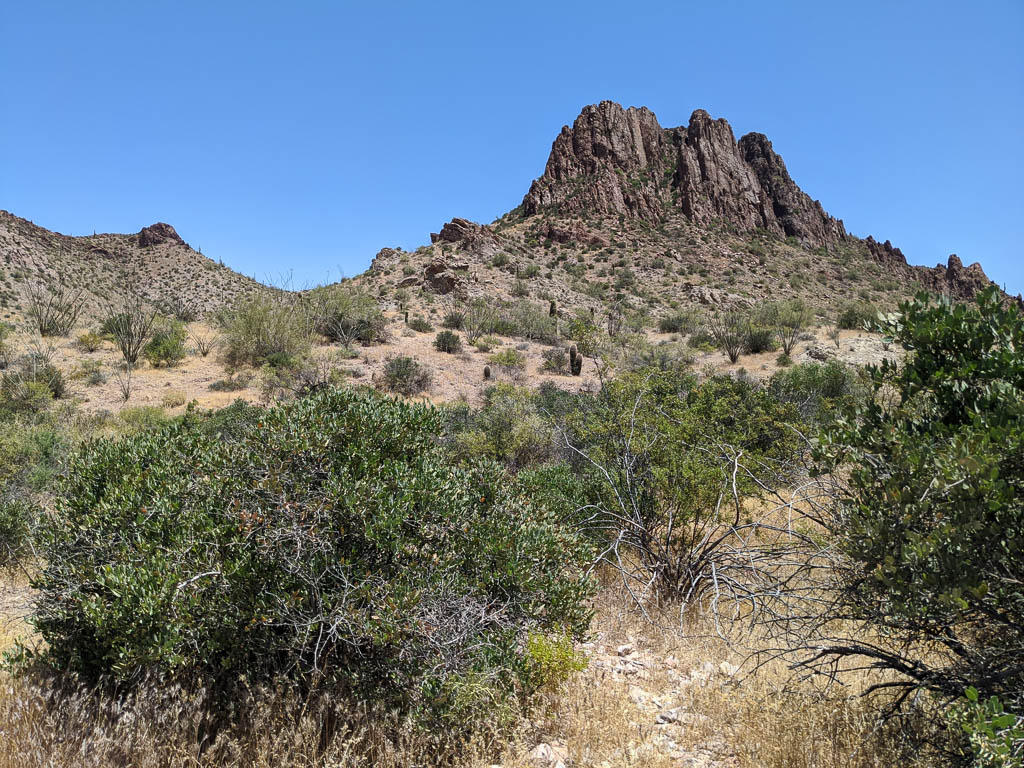


Kathe mused, “How long would we need to stop and wait in order to see some wildlife?” We didn’t stop and wait, but shortly thereafter six mule deer ran across the trail a short distance ahead of us. They climbed the bank on the opposite side and four of them stopped part way up and turned back to look at us. After several minutes they turned and ran up the rest of the hill to join their friends. They were the only large wildlife we have seen in the Reserve so far.
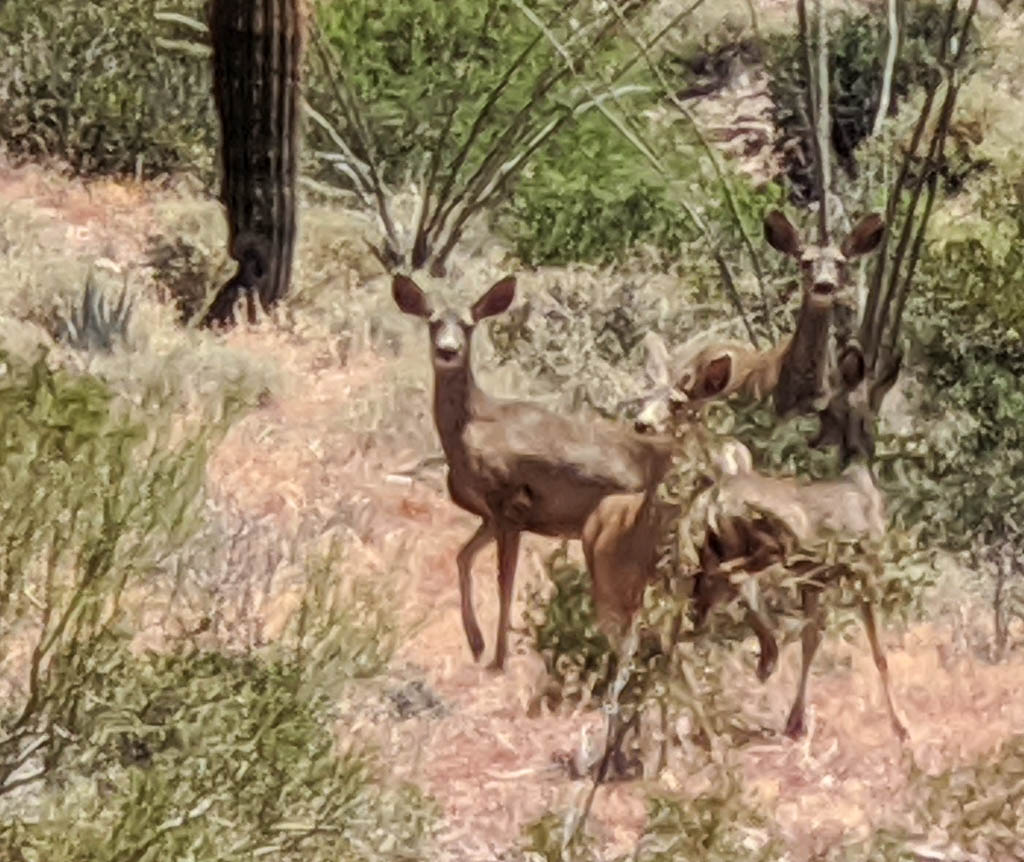
Please excuse the lack of focus. That’s cropped way down from my phone camera. It is a good camera, but has problems when the interesting subject is not in the foreground. I have to figure a way to keep my real camera handy without killing it with the fine dust that gets everywhere.
Fortunately, the GoPro was on, so we captured their dash across the trail. It is in the video at the end of the post.
We see quail everywhere, including family groups of mama and up to twenty chicks. We’ve seen some as small as about an inch and a half tall—doing well at keeping up with mama as she hurries across the trail. We see road runners less often; again, apologies for the focus problem here. Same excuse.

KOFA is known for its Bighorn Sheep and Sonoran Pronghorn, but they seem to be elusive. You can also look at the Bighorn Sheep pamphlet [PDF] that is available at all the entrances to the Reserve.
And we have “wild” life in the campground as well!

The prospector
When traveling the trails into and behind the mountains near here, it is easy to convince yourself that you are the only person.
Anywhere.
I stopped on a trail to take a picture of an “Abandoned Mine” sign to show you, when from behind me I heard a booming voice, “Good afternoon, friend!”
Definitely not what I expected there! He came over and explained that I was on his mining claim; he had heard me ride in (Clark is loud) and wanted to know what I was doing. It was obvious to him that I was just riding the trails and the conversation was entirely amiable. He is prospecting for gold; he said that he has been successful so far on this claim. According to him gold is the reason for most, if not all, of the claims in this part of Arizona. I asked him about the process of staking a claim. He said that he really doesn’t know. Apparently virtually all the land in the area is claimed by someone (many someones); he had to buy his claim from another person. “I got it used.”

Some people post their claim in a little stronger manner…

Abandoned mines are all over the place—open holes in the ground from ten feet deep to…many. Some still have structures that survive…sort of.


Most of the abandoned mines that are just holes in the ground are fenced off with warning signs, but not all. Just another danger to be aware of, along with the scorpions, rattle snakes, and roadrunners (beware of falling anvils). No, we haven’t seen any scorpions or rattle snakes. Yet. Be sure that we’ll let you know here if we do!





There isn’t much timber out here for building shelters. One thing miners had lots of, is rock. So quite a few stone cabins remain; some in better condition than others. It seems that very little mortar was used; we’ve seen a few with no sign of mortar at all.




Reduce, reuse, recycle. When the old truck dies, it becomes a hardware store, providing parts and equipment for other mining camp needs. Here, some roof rafters.

Driving the trails
We’ve been out on Clark nearly every day; usually both of us go (and Kathe drives), sometimes Al goes out alone. We’re becoming more comfortable with Clark’s mountain-goat-like abilities. So far we have clocked almost 600 miles of fun in the immediate area. The dealer we bought Clark from offers a discounted service that we picked up. They call it a “two year” plan, but it is based on hours of use: X services at Y hour intervals. We’ll probably use it up by early fall at this rate!
Back in the dark days of computing before GUIs, there was a command-line game called “Adventure.” It had two key phrases: “You are in a maze of twisty passages, all alike,” and “You are in a maze of twisty passages, all different.” If you went into a twisty passage going north, you might come out in a different room going south. Or east. (It is still available on github!)
The trails here are like that. There are hundreds of them; only a small subset are marked. They twist and turn and intersect and head who knows where! We use a GPS-enabled tablet running the Avenza mapping program to navigate, so we feel secure about not getting lost, but I wouldn’t want to go too far here without it. (We also run Avenza on our phones as backup.) Here are some of of our tracks.


Some friends have asked how we try to stay safe when riding on the desert.
We carry another backup GPS in the form of a Garmin inReach satellite communicator, with which we can send and receive text messages while out of cell phone range. It also has an SOS function to contact a 24/7/365 rescue dispatch center should the need arise. Needless to say we hope we never need that! But it is nice to be able to send texts to let someone know, for instance, that we’re OK, but taking longer than expected so they don’t worry.
We also carry a fairly capable trauma first aid kit, some spare parts, a tool kit to take apart / repair much of the machine, and ropes, pulleys, etc., to extract ourselves by using Clark’s winch if we get stuck.
And water. Lots and lots of water.
And when one of us goes out alone, we always let the other know roughly where we will be.
A recent conversation:
Al: The only way you can find out what Clark can do is to try more and more challenging things.
Kathe: And what happens when what you try is outside its capabilities and you’re stuck (or rolled, or…)?
She’s so practical.
But we haven’t been stuck yet. (And haven’t rolled it!) For the most part, we stay on well traveled trails. Yes, that rise may look very steep, but from looking at the tracks, many, many people have traveled it successfully. Onward!
Sometimes, the trails are wide, flat, and smooth:

Sometimes, narrow:

Sometimes hilly and steep (and sometimes much steeper than they appear from the bottom).

To really appreciate that hill, please watch the video at the end of this post which tries to give an example of what we’ve been enjoying from Clark.
And, sometimes, they just aren’t. Visible, that is. There are some BLM-designated trails that look like just bare unmolested desert surface stretching into the distance, or that appear to simply be a tangle of desert shrubbery. Our GPS-enabled mapping tablet has let us traverse some of these “non-trails” (my term). Others, we just couldn’t figure out at all.
Some trails proceed in washes instead of across them. We are fortunate: a wash that is part of the local trail system is right behind our RV Park, so we can access the trails by going through a gate at the rear of the property.
Driving in a wash with a deep, loose, gravel bed reminds me of sailing with a strong following sea. The rudder is more like a hint to the boat of where you’d like it to point, instead of a strong command. When driving in the deep gravel, even in four wheel drive, pointing the front tires is merely a hint to Clark. Which it usually (eventually) obeys.
Caution: This might make you blush
Kathe here. When we first started riding out onto the desert, I prided myself in the fact that I can go for hours without peeing. Women, you know what I mean! Right?
But soon I realized some of our trips might get long. And hydrating while we’re out on the desert is ESSENTIAL. However, peeing behind a bush (cactus!) just wouldn’t cut it. Ouch! But what could I do? I didn’t want to be the cause of foreshortening a planned excursion.
Enter FUD — the feminine urinary director. Yup. It’s a thing. A REAL thing. And it works GREAT! I can stand up and pee away from me. Now we can be out for a number of hours and I can be comfortable. Why didn’t I know about these years ago? Here’s what it looks like.

Still blooming!
We are still seeing flowering plants in the area, although the saguaros are pretty much done by now.




Miscellany
[Quick: what periodical had a “Miscellany” page on the last page of every issue?]
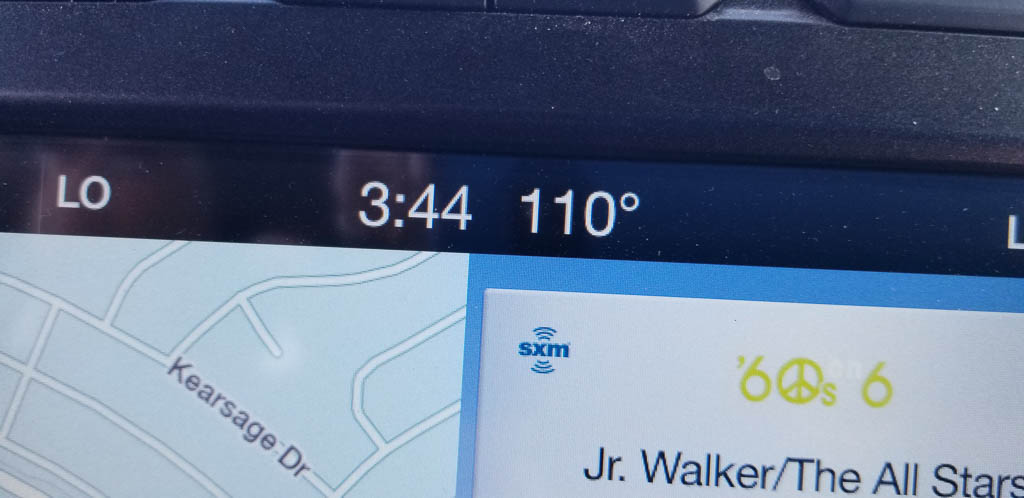
One afternoon I went out to the truck and found this waiting for me, in the console cup holder. The can was half empty, but I could find no trace whatsoever of the half of the contents that weren’t there. No spray on the ceiling, no drips in the cup holder or on the floor. I count myself very lucky! You can see in the pic that the pop top is still sealed. Guess that isn’t the weakest part of the can!

The truck thermometer said 127, but it had been sitting in the sun. I’d guess the air temp at about 115 outside. Who knows how hot inside the closed up truck! (Not the same day as the 110° picture above.)
We were amused by these saguaros:

Several posts back we talked about the public art that was scattered around town. When we saw “Potty Garden” as a point of interest on the map of desert trails, we had to check it out! Of course!
Wouldn’t you?

As I noted above, in amongst the mountains it is easy to convince yourself that you’re all alone. But every once in a while our path meets signs of the outside world.

The slanted orange thing at the top is an identification number, for checking the route from a helicopter. All the infrastructure around here, cable as above, gas pipelines, and towers for the electrical grid have this setup. It is not at all unusual to see a low, slow helo going by as it is checking something.
A few of the trails parallel Interstate 10, to take advantage of the grading. (But isn’t “unusual” grading the point of riding these machines?)

And occasionally someone leaves a sign of their former presence. Geocache? Easter egg?

The El Paso (TX) Natural Gas Company holds several rights of way through the area to get their product to the cities on the coast.

One of the pipelines provides what could be considered an “off road highway,” named “Pipeline Road.” Really; it is on the maps. In addition to being a nice wide well graded path (they run pickups on it), you occasionally come across installations like this. I’ve found two in the area.

The promised video
I’ve heard that cartography is the art of omitting information. If maps included all the detail available, they would be unusable. Consider city subway maps. They show almost nothing, but present the important (for that use) information clearly.
I think making videos is similar. I have incredible respect for people who produce videos; editing hours of “film” into minutes or even seconds and still coming out with an interesting, cohesive story. I don’t consider myself to be in that group of people, but I have pulled together a few snippets of trail rides to try to show you what we’ve been seeing these past few weeks. I hope you enjoy it! It is just over 1 minute long. The first part is the mule deer running across our path on KOFA Queen Canyon Road, then starting at about 15 seconds, Kathe’s climb of the hill (at 2X speed). It was way steeper than it looks…
The view from the top was worth the climb! We’re looking west; the very farthest mountain range is probably California.

That’s about it for now. We hope you stay safe as society starts to open up. We have no plans to change how we’ve been isolating: riding in the desert with no others nearby or staying in the RV, unless going somewhere is absolutely necessary. Arizona is becoming a hot spot (get it?); things are not under control here.
See you next time!
-Al & Kathe aka The Lobsters






